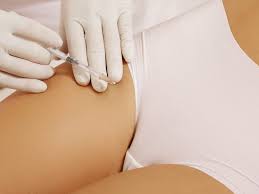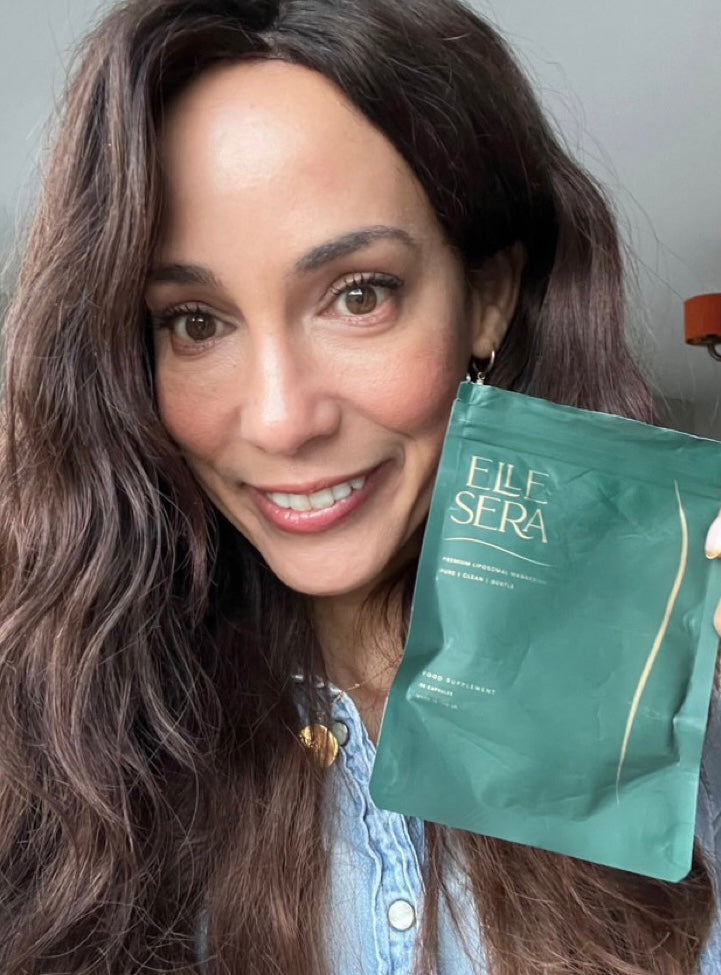The field of regenerative aesthetics is transforming intimate health, offering cutting-edge solutions for vaginal rejuvenation. Whether addressing age-related changes, postnatal recovery, or menopausal symptoms, modern treatments provide effective, non-surgical alternatives to improve vaginal health, function, and overall confidence. These treatments can be used alongside traditional hormonal therapies or as standalone options for those who cannot or prefer not to use hormones. Many can also be combined synergistically to enhance overall results. This article explores some of the most advanced regenerative treatments available, giving both practitioners and patients insight into their benefits and applications.
Why Consider Vaginal Rejuvenation?
Hormonal fluctuations, childbirth, and aging can lead to vaginal laxity, dryness, discomfort, and even urinary incontinence. These changes impact not only physical well-being but also emotional and sexual health. While traditional approaches often relied on hormone therapy or invasive surgical procedures, advancements in regenerative medicine now offer minimally invasive, scientifically backed treatments. These therapies stimulate tissue repair, enhance hydration and elasticity, and restore function, helping individuals regain comfort and confidence. Many of these treatments can be used in combination to maximize their effectiveness, tailoring solutions to individual needs.
Leading Vaginal Rejuvenation Treatments
1. Platelet-Rich Plasma (PRP) Therapy
Platelet-Rich Plasma (PRP) therapy is widely used in regenerative medicine for its ability to promote healing and tissue repair. In the context of vaginal health, PRP enhances collagen production, improves blood flow, and increases sensitivity by utilising the body’s natural growth factors. This makes it an effective option for addressing vaginal atrophy, dryness, and stress urinary incontinence. PRP therapy can be used alone or in combination with other treatments to maximise its benefits.
How It Works
-
A small amount of the patient’s blood is drawn and processed to isolate platelet-rich plasma, which is rich in growth factors that stimulate tissue regeneration.
-
The PRP is then injected into specific areas of the vaginal tissue, promoting cellular repair and collagen synthesis.
-
This process leads to increased hydration, improved elasticity, enhanced sensation, and relief from urinary incontinence.
Evidence-Based Benefits
Clinical research supports PRP therapy’s effectiveness for vaginal rejuvenation. A study by Dankova et al. (2023), published in the Journal of Lower Genital Tract Disease, found that PRP therapy significantly improved symptoms of vaginal atrophy and stress urinary incontinence in postmenopausal women. Patients reported a 60% improvement in vaginal hydration and elasticity, along with a 40% reduction in urinary incontinence symptoms after treatment.
Given its regenerative properties and minimal downtime, PRP therapy is a valuable tool for practitioners seeking to offer non-hormonal, minimally invasive solutions for patients experiencing vaginal discomfort or functional decline.
2. Polynucleotides (Plinest New Gyn)
Polynucleotides, such as Plinest New Gyn, are a breakthrough in regenerative vaginal treatments. These bioactive molecules, derived from purified and controlled sources, work at a cellular level to enhance tissue repair, reduce inflammation, and improve mucosal hydration. They provide a non-hormonal option for vaginal rejuvenation and can be used alongside traditional hormonal therapies or as an alternative for those who cannot take or prefer to avoid hormones.
Key Benefits
✔ Deep tissue repair and rejuvenation – Stimulates fibroblast activity and collagen production to restore vaginal structure and function.
✔ Improved mucosal hydration and elasticity – Enhances natural lubrication and strengthens the vaginal wall, improving comfort.
✔ Reduction of inflammation and discomfort – Effective in treating conditions such as vaginal atrophy, lichen sclerosus, and chronic dryness.
Evidence-Based Effectiveness
A detailed review by Lee et al. (2024), published in the International Journal of Women’s Dermatology, demonstrated that polynucleotide treatments led to a 72% increase in fibroblast activity and a 50% improvement in vaginal hydration within 12 weeks. Additionally, 80% of menopausal women reported a significant reduction in vaginal discomfort and dryness, highlighting polynucleotides as a highly effective option for non-hormonal vaginal rejuvenation.
By promoting cellular repair and hydration, polynucleotides provide a synergistic effect when used with other regenerative treatments like PRP, maximising overall results for vaginal health and function.
3. Laser Treatment for Vaginal Rejuvenation
Laser therapy is a well-established, non-surgical approach to vaginal rejuvenation that stimulates collagen and elastin production, improving tissue structure and function. It can be used alongside traditional hormonal treatments or as an alternative for those who cannot or prefer not to use hormones.
How It Works
✔ A fractional CO₂ or erbium laser delivers controlled thermal energy to the vaginal walls.
✔ This stimulates fibroblast activity, leading to increased collagen production, improved tissue thickness, and enhanced hydration.
✔ Over time, this process restores elasticity, improves lubrication, and strengthens vaginal support structures, helping with symptoms such as vaginal atrophy, dryness, and stress urinary incontinence.
Evidence-Based Effectiveness
A study by Li et al. (2020), published in Lasers in Surgery and Medicine, found that fractional CO₂ laser therapy led to a 70% improvement in vaginal atrophy symptoms among postmenopausal women. Additionally, 78% of patients reported enhanced vaginal hydration and elasticity, and 65% experienced a significant reduction in stress urinary incontinence after a full treatment course.
Clinical Advantages
✔ Non-invasive, quick procedure with minimal downtime
✔ Long-lasting improvements in hydration, elasticity, and function
✔ Can be used in combination with PRP and polynucleotides for enhanced results
By stimulating natural tissue regeneration, laser therapy provides a safe, effective, and hormone-free option for vaginal rejuvenation, delivering measurable improvements in both comfort and function.
4. Caress Flow Oxygenation Therapy
Caress Flow Oxygenation Therapy is an advanced, non-invasive treatment that uses oxygen infusion to promote vaginal tissue regeneration at a cellular level. This method helps rejuvenate vaginal tissue by delivering high-concentration oxygen and bioactive molecules deep into the vaginal mucosa, improving hydration, elasticity, and overall tissue health. It is an ideal treatment for those seeking a hormone-free alternative or for patients who prefer to avoid hormonal therapies.
How It Works
✔ The therapy delivers oxygen directly into vaginal tissue, enhancing healing and promoting collagen production.
✔ Oxygenation stimulates microcirculation within the vaginal mucosa, which helps improve hydration and elasticity.
✔ By increasing oxygen supply to the tissues, the therapy reduces oxidative stress, which in turn helps to restore tissue function and integrity.
Evidence-Based Effectiveness
Research has shown that oxygen-based therapies, such as Caress Flow, significantly contribute to angiogenesis (formation of new blood vessels), further supporting fibroblast activity—key for tissue repair. Studies indicate that this regenerative approach can be especially beneficial in conditions like vaginal atrophy and other gynecological disorders.
A randomised controlled trial by Jokar et al. (2015) compared the efficacy of hyaluronic acid vaginal cream to conjugated estrogen cream for managing vaginal atrophy. The study found that while both treatments were effective, hyaluronic acid presented a more favorable safety profile, with no side effects commonly associated with hormonal therapies. This makes Caress Flow Oxygenation Therapy, with its unique oxygen and hyaluronic acid synergy, a highly promising option for those wishing to avoid hormones while still benefiting from regenerative treatment.
Key Advantages
✔ Promotes natural tissue regeneration through enhanced oxygenation and hydration
✔ Non-invasive and painless with zero downtime
✔ Effective in reducing vaginal dryness, atrophy, and improving overall vaginal health
✔ Can be used in combination with other regenerative treatments for enhanced outcomes
Choosing the Right Treatment: Practitioner and Patient Considerations
Selecting the best approach depends on the patient’s specific needs, medical history, and desired outcomes. A thorough consultation with a trained aesthetic or regenerative medicine practitioner is essential to determine the most appropriate treatment plan.
For practitioners, understanding the science behind these treatments and mastering their application is key to delivering optimal results. Ongoing education and hands-on training ensure safe and effective practice in this growing area of regenerative aesthetics.
Final Thoughts
Vaginal rejuvenation is no longer a taboo subject—it’s an essential part of women's health and well-being. With the latest advancements in regenerative medicine, women now have access to non-surgical, highly effective treatments that restore confidence, comfort, and quality of life. Whether through PRP, polynucleotides, laser therapy, or oxygenation therapy, these options empower women to take charge of their intimate health in a safe and natural way.
For practitioners, staying at the forefront of these innovations ensures that patients receive the best possible care, making vaginal rejuvenation a cornerstone of modern aesthetic and regenerative medicine.
References:
-
PRP and vaginal atrophy study: https://www.ncbi.nlm.nih.gov/pmc/articles/PMC5646921/
-
Polynucleotides and vaginal hydration: https://www.researchgate.net/publication/382724822_Polynucleotides_in_Aesthetic_Medicine_A_Review_of_Current_Practices_and_Perceived_Effectiveness
-
Laser therapy for vaginal atrophy: https://pmc.ncbi.nlm.nih.gov/articles/PMC8246931/
-
Oxygenation therapy and tissue repair:



